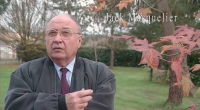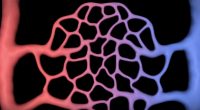
- The gist of this article
Plants protect themselves against oxidation and free radicals by producing vast amounts of antioxidants, such as OPCs. These antioxidants are always located at strategic sites, where the defense against oxidation is most needed. Professor Jack Masquelier discovered how to extract OPCs from the skins of peanuts and grape seeds and from the bark of the French Maritime Pine Tree and apply their natural benefits in human health.
Table of contents
The history of OPCs is intimately connected with the French Maritime pine tree, the Pinus maritima. In the late 1940s, professor Jack Masquelier discovered how to extract OPCs from the bark of this tree. During the 1960s, the world’s first pine bark extract was launched in France as a herbal remedy under the name Flavan®. In 1965, Masquelier proposed an impressive number of vascular benefits of the Maritime Pine bark extract (Flavan®) made according to his extraction method:
- Capillary fragility
- Tendency to ecchymosis (hematoma or “blue spots” occurring spontaneously or after bruising or sports injuries)
- Vascular problems in those with high blood pressure
- Diabetic retinopathy (eyesight problems due to impaired circulation of the retina in diabetics)
- Capillary fragility caused by renal insufficiency, hepatic insufficiency, or infectious diseases
- Abnormally high capillary permeability
- Swollen legs, “heavy legs”
- Varicose conditions, varicose ulcers
- Sequels of phlebitis (vein inflammation)
- Edema in premature infants
- Edema caused by hepatic insufficiency
- Pleural cardiac effusion
- Pleurisy
- Periarthritis
- Allergic reactions (urticaria, eczema, Quincke’s edema, dishidrosis)
- Dermatoses (pemphigus – “water blisters”, psoriasis)
- Cellulitis
OPCs, oxidation and rancidity
In 1948, when Jack Masquelier happened to pick up a piece of bark from the Maritime Pine in the forest of Les Landes, he was struck by the fact that it was dark brown-red on the outside but light brown-yellow on the inside. The pine bark reminded him of the peanut skin, from which he had first isolated OPCs. It, too, is red on the outside and light yellow on the inside. In the peanut, OPCs are located in the inner part of the skin, probably because this is the best place for the OPCs to protect the oils in the nut against turning rancid under the influence of oxygen. OPCs form an antioxidative sheath.
Masquelier’s pine bark extract
Masquelier concluded that in the pine tree the bioactive part that contains OPCs might be located in the inner lining of the bark, protecting the stem and especially the fluids that flow through it. He figured that the resin in the pine was also an easily oxidizable substance that was protected by the OPCs in the bark’s inner lining. When the resin becomes oxidized, it turns hard and sticky and it is no longer of any use for the tree. So the resin must be protected against oxidation. The assumption that OPCs provided this antioxidative protection logically presented itself.
OPCs from grape seed skins
What goes for peanut skins and inner lining of the pine tree’s bark also goes for grape seeds. OPCs are not located in the seeds, but in the light skin that surrounds them and protects the oils in the seed against rancidity, just as they protect the fluids moving through the stem of the pine tree. Some years after the introduction of Flavan® as a herbal remedy, Masquelier managed to develop a method for extracting OPCs from grape seeds, to be precise, from the skins of the seeds, not to be confused with the skins of the grapes.
Masquelier’s OPCs and circulatory health
What OPCs do in plants, they do in the human body. OPCs protect against oxidation and they prevent essential fatty acids from going rancid. They play a key role in the maintenance of the circulatory system, which has the task of channeling blood and lymph through the entire organism, allowing the transportation, delivery, and pick-up of their particles. It is a matter of pumping and keeping everything flowing while controlling volume and allowing particles to leave and enter the system. The arteries and veins, the capillaries and the lymphatic system — the whole circulatory system pervading the tissues at cell level is embedded in the connective tissue, which provides structure, strength, and resilience. Although this complex system is remarkably robust, cardiovascular mortality is still Killer No 1 in the Western world. The number of people suffering from nasty vascular problems is enormous. Decades of product-specific research prove that Masquelier’s OPCs can tip the balance in favour of a healthy and well-functioning cardiovascular system.






